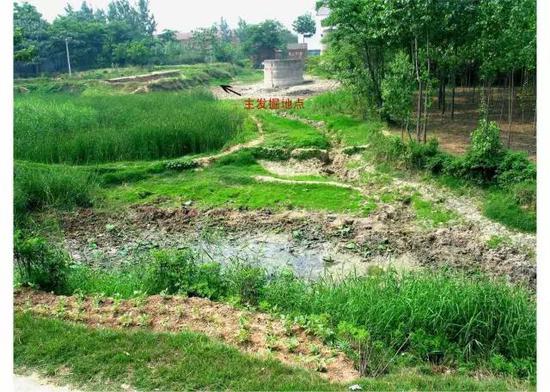The secrets of Xuchang Man
china.org.cn / chinagate.cn by Gong Jie, March 31, 2017 Adjust font size:
 |
|
Ruins of Xuchang Man [File Photo] |
A report published in Science magazine in March about Xuchang Man, dating back to 105,000 -- 125,000 years ago and living in Xuchang of central China's Henan Province, has aroused much public attention.
Li Zhanyang, lead author of the report and a researcher with the Henan Provincial Institute of Cultural Heritage and Archaeology, thus became famous overnight.
Since 2005, Li's team has found 45 fragments of human crania at the Xuchang site. These 45 fragments have since been pieced together in two skulls and named as Xuchang Man.
According to Li's team, the Xuchang remains reveal shared features with East Asian hominids, Neanderthals and early modern humans. It proves the existence of exchanges between China's hominids and Neanderthals, as well as the continuity of human evolution in China.
In anthropogenic circles studying human origins, an African origin is the current general consensus in Europe and the United States; yet, a competing "multiregional view" is also held by many scientists in China and Australia.The research of Xuchang Man provides new evidence for the multiregional view.
The discovery of Xuchang Man
Li had led his team to excavate relics in Old Stone Age ruins in the town of Lingjing, near Xuchang, Henan Province, since April 2005.
However, they did not find any human cranial fossil until the morning of Dec. 17, 2007. A palm-sized yellow piece of rounded skull cap was unearthed at the site of Lingjing.
"Come on," shouted Li Cuiyun, a female worker in the team, who found the fossil, quickly bringing all the other workers to her side. The human cranial fossil was embedded into the muddy floor of the pit and the surface was smooth.
It was noon, and Li Zhanyang was at home when he received the call from the workers at the site. He told them not to touch the fossil and then rushed to join the team.
"I'd been waiting for this moment too long," he said, adding that the team had been scheduled to stop and rest due to the cold weather on that day.
He scoured the area very carefully after he arrived. "It's just an old friend that I haven't seen for a long time," said Li. The palm-sized human cranial fossil was broken and scattered over a buried area of two square meters. After the first find, they unearthed 15 more pieces.